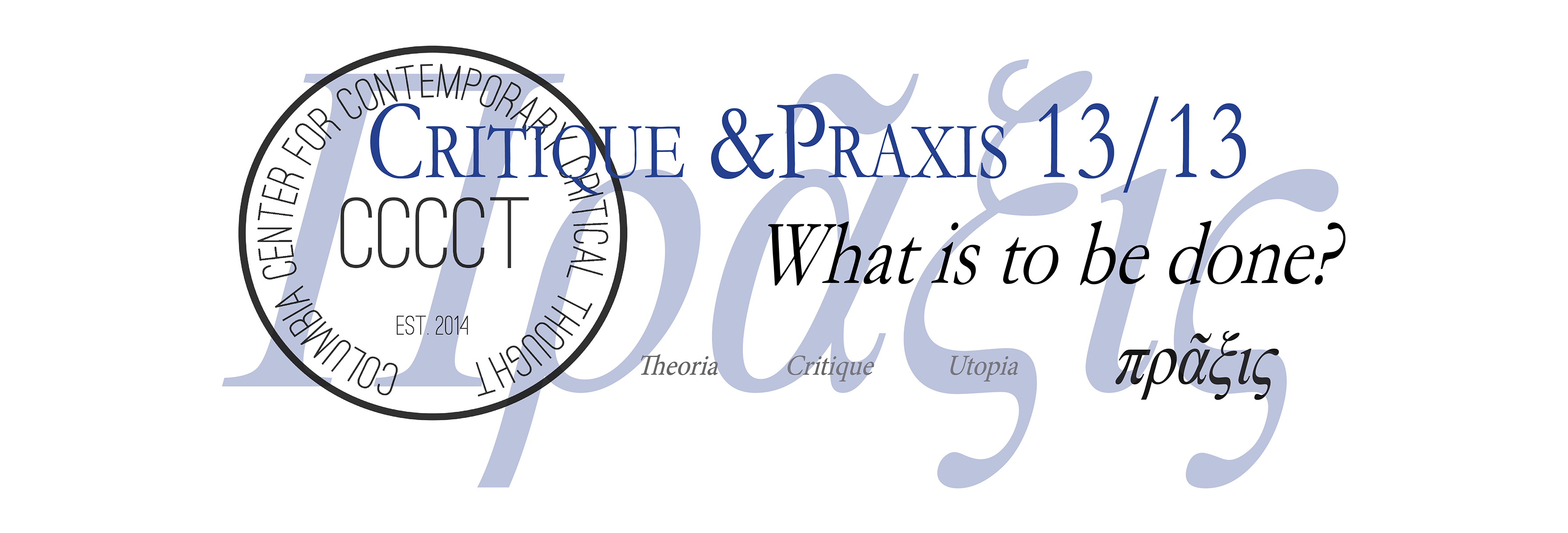By Jeff Stein
In this brief response to Hardt & Negri (H&N), I wish to explore their repeated use of one key phrase: “the rights of the common.”[1] I aim to isolate those “rights” and subject them to the kind of critique that became the hallmark of the Critical Legal Studies (CLS) movement (albeit in the context of individual American constitutional rights).[2] Indeed, while H&N engage with Duncan Kennedy and the CLS literature, their focus is on CLS “practical projects” that aim to “reform property from the inside.”[3] However, H&N’s invocation of “rights” invites the kind of rights skepticism that CLS scholars explored.
For H&N, the common, or the “multitude,” has a “right” to engage in democratic decisionmaking procedures when collectively managing objects of social wealth, including “ideas, code, images, and cultural products,” as well as “cultural circuits” and “social institutions.”[4] Precisely, they speak of “a right to decide together democratically about the access, use, and distribution of social wealth.”[5] This right is meant to serve their first order goal of “establish[ing] modes of sharing wealth that are equal and open,” thus serving their larger project of developing a system of “nonproperty.”[6]
Following Mark Tushnet, we can consider the extent to which this “right” suffers from “fundamental indeterminacy.”[7] Indeed, as Tushnet famously noted, “fundamental indeterminacy makes it impossible to connect [an] abstract right … to any particular outcome without fully specifying a wide range of social arrangements that the proponents of the right take for granted but that another person … might reject.”[8] Given this malleability, rights talk is either “an act of political rhetoric or a commitment to social transformation,” but the articulation of the right itself bears little fruit.[9]
Here, the concept of democracy does all of the work for H&N. They speak of a “need for governance and institution[s] … in which the rules have been devised and modified by the participants themselves and also are monitored and enforced by them.”[10] But this cursory nod to institutional design does little to counter the indeterminacy critique. In fact, H&N’s formulation is premised on rather consequential assumptions. For example, the guarantee of a process that allows for rule creation, modification, and enforcement by participants does not, in and of itself, guarantee that currently vulnerable individuals or groups within “the multitude” will, in fact, introduce and enact rules influencing the collective management of social wealth. And more broadly, the guarantee of a “more democratic” process—which could take many different forms, ranging from majority rule to lottery voting[11]—does little to guarantee that egalitarian modes of sharing social wealth will necessarily result from the process. Thus, H&N’s rights guarantee seems premised on the pre-existence of political equality and open access, as well as a certain amount of magical thinking about the fruits of democracy.
On this front, Camille Robcis’ exploration of institutional psychotherapy strikes me as the most generative. Indeed, Robcis suggests that communities might “constantly imagine and reimagine institutions that would produce new vectors of transference, different forms of identifications, and alternative social relations.”[12] And yet, Robcis’ intervention does little to support H&N’s contention that institutional (re)imaginations of the order that would be necessary to support the nonproperty project could be achieved in “more expansive democratic experiences.”[13]
This leads us to another paradox in H&N’s formulation. They wish to move us beyond legal mediations, and yet the social transformation that they seek seems largely dependent on the specific nature of institutions that govern objects of social wealth. In turn, the structure and rhetoric of these institutions could ultimately lead to the kind of “loss of faith” that plagued 20th century American legal reasoning, and constitutional rights themselves, that Duncan Kennedy and others chronicled.[14] Of course, Kennedy notes that commitments to “outside rights” (rights that preexist legal reasoning) can defensibly exist alongside critiques of implementing modes of governance (and their attendant rhetoric and reasoning).[15] But Kennedy reminds us that “there may be trouble” if the critical spirit jumps the outside/inside line, thus threatening the viability of first order egalitarian commitments.[16]
Given the force of these critiques, my hunch is that H&N’s project is better served by focus on institutional design rather than imprecise articulations of collective rights. If democratic decisionmaking is to be our saving grace, then it is imperative that we develop sufficiently concrete (yet fluid) practices of social production that can be scaled up to match the scope of H&N’s egalitarian vision.
[1] Assembly, passim.
[2] See, e.g., Mark Tushnet, An Essay on Rights, 62 Tex. L. Rev. 1363 (1984).
[3] Assembly, p. 88.
[4] Id. at 98.
[5] Id.
[6] Id. at 97.
[7] Tushnet, supra note 2, at 1375.
[8] Id.
[9] Id. at 1380.
[10] Assembly, p. 99.
[11] See, e.g., Ben Saunders, Democracy, Political Equality, and Majority Rule, 121 Ethics 148, 149 (2010).
[12] Camille Robcis, Radical Psychiatry, Institutional Analysis, and the Commons, Praxis 13/13 (Dec. 4, 2018), https://blogs.law.columbia.edu/praxis1313/camille-robcis-radical-psychiatry-institutional-analysis-and-the-commons/.
[13] Assembly, p. 99.
[14] Duncan Kennedy, The Critique of Rights in Critical Legal Studies, in Left Legalism/Left Critique 209 (Wendy Brown & Janet Halley eds., 2002).
[15] Id.
[16] Id. at 210.
